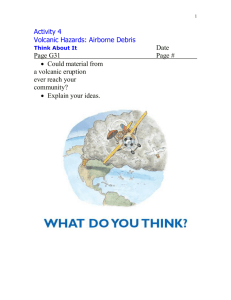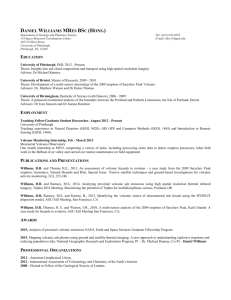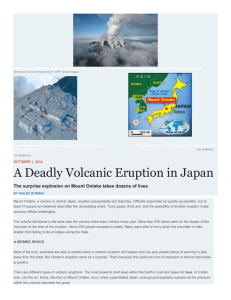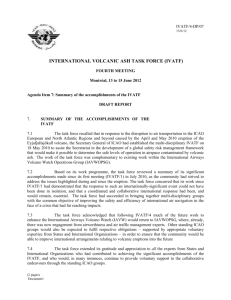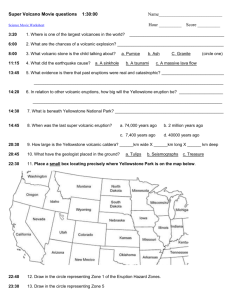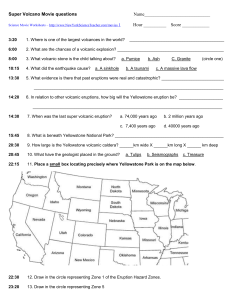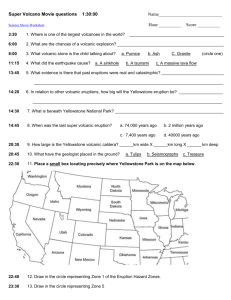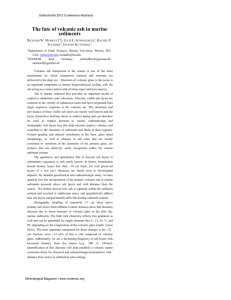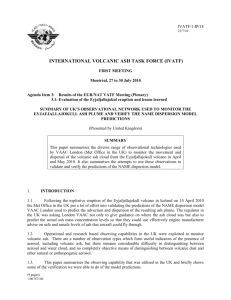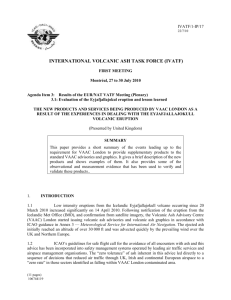Volcanic Hazards: Airbone Debris
advertisement
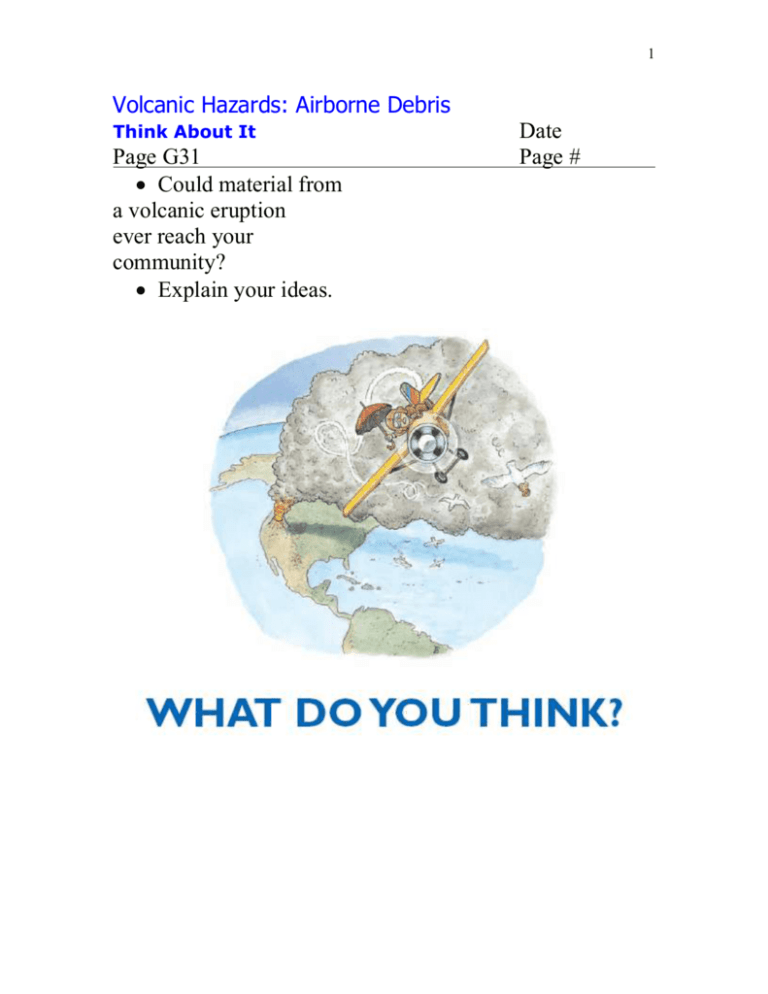
1 Volcanic Hazards: Airborne Debris Think About It Page G31 Could material from a volcanic eruption ever reach your community? Explain your ideas. Date Page # 2 Activity 4 Investigate Pages G32-33 1a. How many states showed at least a trace of volcanic ash? b. In what direction did the ash move? c. Was Canada affected by ash from Mt. St. Helens? Explain. d. Would you consider this a small, medium, large, or gigantic eruption? Explain. Date Page # 3 2. Copy the table with volume from least to greatest. 2a. Make a bar graph. Plot the name of the volcano on the horizontal axis. 2b. Plot the volume of volcanic eruption from least to greatest on the vertical axis. 3a. Can you group the eruptions by size? Mark the groups on your plot. Explain how you chose the groups. 3b. What group does the 1980 eruption of Mt. St. Helens fit into? 3c. What other information (besides volume) would help you to predict how far the ash would go? 4 4a. Rank the area of eruptions in order from smallest to largest. 4b. Compare the areas to the volumes. Describe any relationships. 4c. Compare the location of each volcano to the path of the ash. Describe any patterns. What might explain any patterns you see? 5 Activity 4 Digging Deeper Pages G34-36 Tephra Volcanic bomb Date Page # pieces of rock and hardened lava that are thrown out of a volcano during an eruption a large, rounded piece of tephra greater than 64 mm in size 6 Lapilli tephra that ranges in size from 2 to 64 mm Ash fine pyroclastic material (less than 2 mm in diameter) Bombs and lapilli usually fall to the ground on or near the volcano Ash travels hundreds to thousands of kilometers Ash hazards Volcanic ash can collapse roofs of homes, factories, and schools 7 Ash can also: •affect breathing in humans and animals •damage automobile and truck engines •interfere with photosynthesis in plants by blocking out the sun •damage aircrafts •cause lahars, especially when rain soaks it 8 Activity 4 Volcanic Hazards: Airborne Debris Check Your Understanding Page G36 1. Explain the meaning of each of the following terms: lahar, pyroclastic flow, caldera 2. Explain the meaning of tephra, and how volcanic bombs, lapilli and ash relate to tephra. 4. How does the amount of silica in magma affect how explosive a volcano can be? Date Page # 9 Volcanic Hazards: Airborne Debris Understanding and Applying Page G37 1. In your own words, compare the size of the areas affected by lava, pyroclastic flows, and ash falls. 2. Is volcanic ash a concern only in the western United States? Explain. 3.Why do eruptions in Hawaii differ from Mt. St. Helens eruptions? Date Page #
